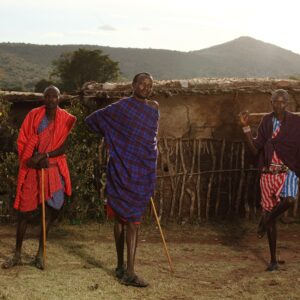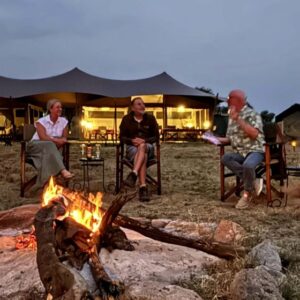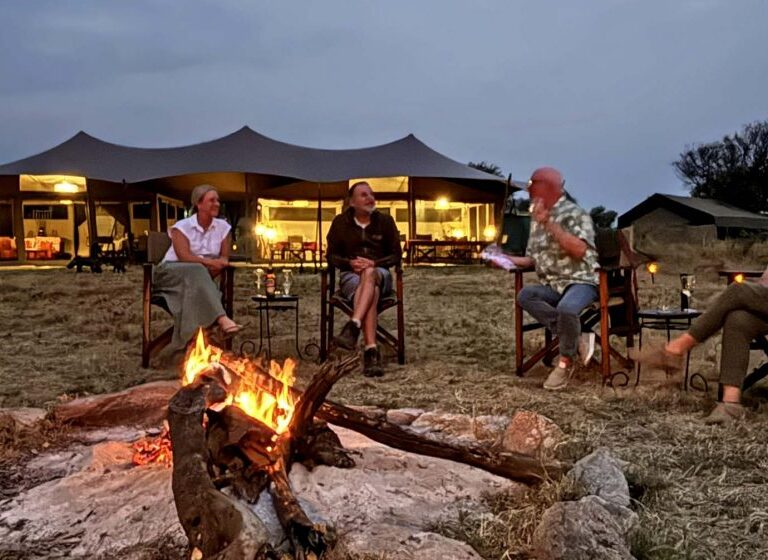Mount Kilimanjaro, Africa’s iconic “Roof of Africa,” is a mosaic of natural wonder, human endeavor, and ancient forces. Its majestic, snow-capped peaks rising from the equatorial plains tell a story far older and deeper than any single ascent. To truly appreciate Kilimanjaro, one must delve into its tumultuous geological past, understand the vibrant cultures nurtured on its slopes, and explore the diverse life forms that call it home, all while acknowledging the ever-present influence of its unique weather patterns and global position. Mount Kilimanjaro’s history is intertwined with the indigenous Chagga people, who settled on its fertile slopes around 400 years ago, according to Foot Slopes Tours and Safaris, while its geology is characterized by three distinct volcanic cones—Shira, Mawenzi, and Kibo—formed by volcanic activity originating from the East African Rift.
History of Mount Kilimanjaro: From Local Lore to Global Icon
The human history of Mount Kilimanjaro stretches back millennia, woven into the oral traditions of the indigenous communities living in its shadow long before any European explorer laid eyes upon it. The local Chagga people, for instance, have revered the mountain for generations, its peaks steeped in spiritual significance and folklore. They were well aware of its “shining mountain” (possibly the meaning of “Kilimanjaro”) long before outsiders arrived.
The first documented sighting by a European is generally attributed to German missionary Johannes Rebmann in 1848, who, to the skepticism of the scientific community at the time, reported seeing a snow-capped mountain near the equator. This seemingly unbelievable observation sparked further exploration.
The first successful ascent to Uhuru Peak, Kilimanjaro’s highest point, occurred on October 6, 1889, by German geographer Hans Meyer and Austrian mountaineer Ludwig Purtscheller, accompanied by their local guide, Yohanas Kinyala Lauwo. Their arduous expedition not only proved the existence of the snow cap but also cemented Kilimanjaro’s place in the annals of global exploration.
In 1921, parts of the mountain were designated a game reserve, which later became Kilimanjaro National Park in 1973. In 1987, the park was inscribed as a UNESCO World Heritage Site, recognizing its outstanding universal value. Today, Kilimanjaro stands as a symbol of Tanzania’s natural heritage and a beacon for adventurers worldwide, with tens of thousands attempting its summit annually.
The Tribal People of Kilimanjaro: Guardians of the Slopes
The fertile slopes of Mount Kilimanjaro have long been home to several ethnic groups, whose cultures and livelihoods are intimately intertwined with the mountain’s bounty. The most prominent of these are the Chagga people.
The Chagga, the Bantu-speaking people known for their advanced agricultural practices, particularly the cultivation of coffee and bananas, which thrive in the rich volcanic soil. They developed intricate irrigation systems using the mountain’s numerous rivers and streams. Demonstrating a sophisticated understanding of their environment. Their traditional homesteads are often built around these fertile fields, and their social structures, historically characterized by chiefdoms. For the Chagga, Kilimanjaro Its not just a geographical feature; it a sacred entity, believed to be the dwelling place of ancestral spirits and a source of both life and divine power (often attributed to their deity, Ruwa). Their folklore, rich with tales of the mountain’s mysteries and its influence on their lives.
Other tribes in the wider Kilimanjaro region include the Maasai. Known for their pastoralist lifestyle and distinctive red shukas, though they typically inhabit the drier plains surrounding the mountain’s base. Their history often involves interactions and sometimes conflicts with the agricultural Chagga. The Pare and other smaller groups also reside in the broader Kilimanjaro area, each contributing to the rich cultural mosaic of the region. Today, many local people, predominantly from the Chagga and other nearby tribes, work as guides, porters, and cooks, forming the indispensable backbone of the Kilimanjaro trekking industry.
Geology of Mount Kilimanjaro: A Fiery Creation
Kilimanjaro’s existence its a direct result of its location within the East African Rift System (EARS). The massive divergent plate boundary where the African Plate is slowly pulling apart. The thinning of the Earth’s crust in this area allows magma from the mantle to rise to the surface, creating volcanoes like Kilimanjaro. Its neighbor Mount Meru, and the Ngorongoro Crater complex. The mountain’s summit also features glacial ice caps, although its rapidly retreating due to climate change. These glaciers have played a significant role in shaping the upper slopes, carving out valleys and ridges over millennia. Kilimanjaro its a colossal stratovolcano formed by the immense forces of Earth’s tectonics. Its comprised of three distinct volcanic cones that merged over millions of years:
Shira (3,962 m / 13,000 ft). The oldest cone, located to the west. It’s largely eroded, with its western flank having collapsed long ago, forming a vast plateau.
Mawenzi (5,149 m / 16,893 ft). The second highest and easternmost cone. Mawenzi is deeply weathered and rugged. Considered extinct, its volcanic activity having ceased millions of years ago.
Kibo (5,895 m / 19,341 ft). The youngest, highest, and central cone, culminating in Uhuru Peak. Kibo is a nearly symmetrical cone with a well-preserved crater. Its classified as dormant, not extinct, as evidenced by persistent fumaroles (steam vents) within its crater. The last major eruption was between 150,000 and 200,000 years ago. But minor activity may have occurred more recently.
Fauna and Flora of Mount Kilimanjaro: A Biodiversity Hotspot
Mount Kilimanjaro’s unique ecological zones support an astonishing diversity of fauna and flora, making it a biodiversity hotspot. As you ascend, you pass through five distinct vegetation zones: Cultivation Zone (800m – 1,800m). Dominated by human settlements and farmlands, primarily coffee and banana plantations. Rainforest Zone (1,800m – 2,800m). A dense, humid montane forest teeming with life. Here, you might spot blue monkeys, black-and-white colobus monkeys, various bird species (including turacos and hornbills), and even elusive elephants, buffalo, or leopards.
Heath/Moorland Zone (2,800m – 4,000m). Characterized by open grasslands, giant heathers, and the bizarre, endemic Dendrosenecio kilimanjari (giant groundsels), which can grow over 10 meters tall. Smaller mammals like eland and duiker may be seen. Alpine Desert Zone (4,000m – 5,000m). A stark, arid landscape with very sparse vegetation, mostly hardy grasses and lichens. Life here limited to insects and small rodents, with occasional birds of prey. Arctic Summit Zone (5,000m – 5,895m). The barren, icy peak, with only lichens surviving on the rocks. This zone features glaciers, snow, and extreme cold, resembling a polar region.
The variety of ecosystems within a relatively short ascent makes Kilimanjaro a fascinating natural laboratory.
Mount Kilimanjaro Weather: A Microcosm of Climates
Kilimanjaro’s weather, as diverse as its ecology, changes dramatically with altitude. Being located near the equator means temperatures at the base. Generally warm (20-30°C / 68-86°F), but they plummet rapidly as you ascend. Rainforest Zone. Humid, frequently rainy, and often shrouded in mist. Moorland. Cooler, with more exposure to wind and cloud cover. Alpine Desert. Cold, dry, and windy during the day, with freezing temperatures at night. Summit. Extremely cold, with temperatures often dropping to -15°C to -25°C (5°F to -13°F) at night. Especially on summit day. Wind chill can make it feel even colder.
The two main trekking seasons, the dry seasons (January-March and June-October), offering clearer skies and better visibility, though rain possible year-round, especially in the rainforest. Always be prepared for all four seasons in a single day.
Where is Mount Kilimanjaro?
Mount Kilimanjaro is located in Tanzania, East Africa, just south of the equator. It lies entirely within Kilimanjaro National Park, which is situated in the Kilimanjaro Region of Tanzania. Its sheer size makes it visible from afar, even from neighboring Kenya. The nearest major city and primary gateway for climbers is Arusha, Tanzania, which is about a 2-hour drive from Kilimanjaro International Airport (JRO) and 1.5 hours from the park gates.
What to Expect on Mount Kilimanjaro: The Journey of a Lifetime
Climbing Kilimanjaro is a multi-day trek that tests physical and mental endurance, typically lasting 5 to 9 days (7-day routes are most popular and recommended for acclimatization). Expect: Pace. “Pole pole” (slowly, slowly) is the mantra. A slow, steady pace is crucial for acclimatization. Physical Demands. Long days of walking over varied terrain (forest paths, rocky trails, volcanic scree, and sometimes snow/ice near the summit). Summit night is particularly challenging, involving a pre-dawn start and a 12-16 hour trek.
Altitude Sickness. The primary challenge. Headaches, nausea, and fatigue are common. Severe symptoms require immediate descent. Camping. Most routes involve camping in tents, with crews setting up and taking down camps. The Marangu route offers hut accommodation. Support Crew. You’ll be accompanied by a team of guides, assistant guides, porters (who carry most of your gear), and a cook. Their support is invaluable.
Food. Hearty, nutritious meals are provided, designed to fuel your ascent. Stunning Scenery. Transitioning through distinct climate zones offers constantly changing and breathtaking views, from lush forests to lunar landscapes and the iconic glaciers. Emotional Journey. A profound experience of self-discovery, camaraderie, and an immense sense of accomplishment upon reaching the “Roof of Africa.”
Kilimanjaro an adventure that transcends mere tourism. Offering a deep dive into geological wonders, rich cultural traditions, and a personal challenge against nature’s grandeur.








